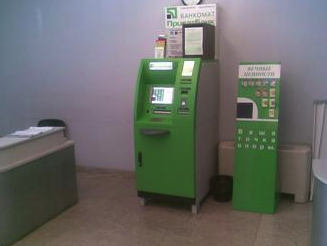 When it comes to handling money, we’d like to think that our local and international banks are the ones who know best. Of course this hasn’t been the case all of the time, as seen over the course of history, but typically the men and women who make the decisions for these financial institutions are ones who we should trust with our hard earned cash.
When it comes to handling money, we’d like to think that our local and international banks are the ones who know best. Of course this hasn’t been the case all of the time, as seen over the course of history, but typically the men and women who make the decisions for these financial institutions are ones who we should trust with our hard earned cash.
For one IT director / CIO, at PrivatBank in Ukraine, named Dmytro Dubilet, 3D printing has provided him with a method of not only saving his company money, but also providing for more convenience to his clientele.
As we all know, computers and other machinery eventually break down over time, especially when used on a daily basis. When it comes to ATM machines, the rate at which repairs must be done is quite high. For some ATM machines in high trafficked areas, they are used by hundreds, if not thousands of people on a daily basis. The constant wear and tear means an increased likelihood of experiencing technical problems.
 Dubilet, however, found a solution to the hefty price and inconvenience of these broken down machines. Rather than having to constantly keep a large stock of some of the more frequently broken parts, as well as pay a high premium to have them manufactured, he decided to begin utilizing a 3D printer in order to print out these parts as they broke.
Dubilet, however, found a solution to the hefty price and inconvenience of these broken down machines. Rather than having to constantly keep a large stock of some of the more frequently broken parts, as well as pay a high premium to have them manufactured, he decided to begin utilizing a 3D printer in order to print out these parts as they broke.
“Usually the news you hear about 3D printers is futuristic in nature, but let me tell you firsthand; they helped us (Privatebank) save money and better serve our customers,” Dubilet explained. “Previously we had to buy replacement gears for our ATMs from third-party manufacturers, but now we have a 3D printer, and we learned how to print the gears out ourselves.”
Dubilet estimates that 3D printing these replacement gears have saved the company an astounding 95% off of the price they had been previously paying to their third party supplier. At the same time, the company no longer needs to maintain a warehouse stock, as the parts can be 3D printed as needed.
Privatbank isn’t using any fancy industrial level 3D printer either. In fact, they are using an affordable Chinese made FDM-based desktop machine, and the parts are printed in ABS plastic. The estimated cost per part is just around $5.00.
It really is nice to see even some of the more wealthy companies utilizing 3D printing in order to reduce their overall costs. The ability for 3D printers to create parts on a one-to-one basis makes it the perfect fabrication method for creating small plastic replacement parts. It would be nice to see other companies follow this route as well.
Subscribe to Our Email Newsletter
Stay up-to-date on all the latest news from the 3D printing industry and receive information and offers from third party vendors.
You May Also Like
Printing Money Episode 17: Recent 3D Printing Deals, with Alex Kingsbury
Printing Money is back with Episode 17! Our host, NewCap Partners‘ Danny Piper, is joined by Alex Kingsbury for this episode, so you can prepare yourself for smart coverage laced...
Insights from Cantor Fitzgerald on AM’s Q1 2024 Landscape
A recent survey by Cantor Fitzgerald sheds light on the persistent challenges within the additive manufacturing (AM) industry in the first quarter of 2024. Based on responses from 38 industry...
3D Printing Financials: Xometry’s Scaling up and Strong Start to 2024
Xometry (Nasdaq: XMTR) kicked off 2024 with strong results, boosting its marketplace and technology to new heights. Both revenue and gross margin soared, fueled by an expanding global network of...
3D Printing Financials: Desktop Metal Targets Recovery Amid Net Losses and Revenue Downturn
Despite facing a decline in revenue and the persistent challenges of a tight economic climate, Desktop Metal (NYSE: DM) is making strides toward operational efficiency. The first quarter of 2024...

































